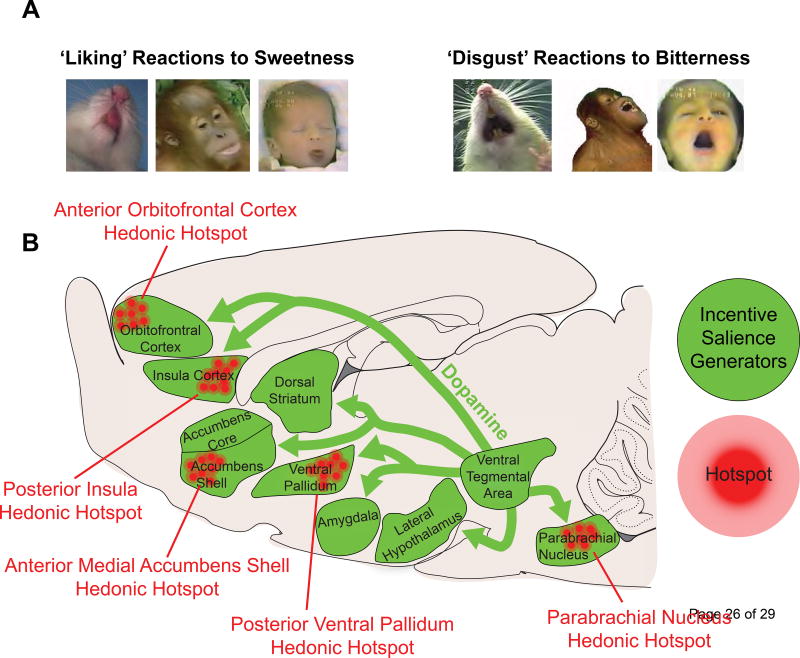Figure 1.
Reward systems in the brain. (A) Examples of positive hedonic orofacial reactions (‘liking’) in response to the taste of sweet sucrose (left). Negative affective reactions (‘disgust’) in response to the taste of bitter quinine solution (right). These affective orofacial reactions to tastes are conserved across species in rodents, non-human primates, and humans infants. (B) Sagittal view of a rat brain depicting brain reward systems. Discrete sites, known as hedonic hotspots (clusters of red circles), can enhance ‘liking’ through the actions of opioids, endocannabinoids and orexins, but not dopamine. ‘Wanting’ is derived from dopamine signaling (green arrows), originating from the ventral tegmental area, acting in brain areas that generate incentive salience (purple structures). Hyperactivity in this ‘wanting’ circuit underlies many conditions characterized by excessive motivation, such as addiction, whereas hypoactivity (depicted by the smaller, darker arrows) may produce avolition seen in depression. Finally, aversive dysfunction of this ‘wanting’ circuit, particularly signalling onto the nucleus accumbens shell, may promote fearful salience to otherwise neutral stimuli- a trait commonly observed in patients with paranoid psychosis.

